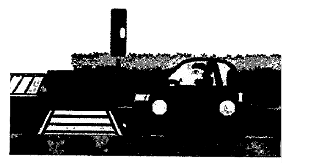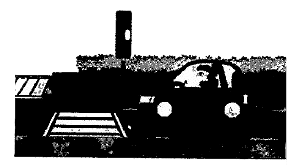A complete cycle of a traffic light takes 60 s. During each cycle the light is green for 25 s, yellow for 5 s and red for 30 s. At a randomly chosen time, the probability that the light will not be green is
13
14
43
712
The correct Answer is:D
Step by step video, text & image solution for A complete cycle of a traffic light takes 60 s. During each cycle the light is green for 25 s, yellow for 5 s and red for 30 s. At a randomly chosen time, the probability that the light will not be green is by Maths experts to help you in doubts & scoring excellent marks in Class 12 exams.
Updated on:21/07/2023Topper's Solved these Questions
- PROBABILITY-1BOOK - DISHA PUBLICATIONCHAPTER - PROBABILITY-1EXERCISE - EXERCISE-2 : CONCEPT APPLICATOR
90 Videos
- PROBABILITY -2BOOK - DISHA PUBLICATIONCHAPTER - PROBABILITY -2EXERCISE - EXERCISE - 2 : CONCEPT APPLICATOR
30 Videos
- RELATIONS AND FUNCTIONS BOOK - DISHA PUBLICATIONCHAPTER - RELATIONS AND FUNCTIONS EXERCISE - EXERCISE - 2
30 Videos
Similar Questions
A bag contains 3 red, 5 yellow and 4 green balls. 3 balls are drawn randomly. What is the probability that the balls drawn contain exactly two green balls ?
View SolutionA bag contains 3 red, 5 yellow and 4 green balls. 3 balls are drawn randomly. What is the probability that the balls drawn contain no yellow ball ?
View Solution
Knowledge Check
A car is stopped at a red traffic light. When the light turns to green, the car has a constant acceleration and crosses the 9.10 m intersection in 2.47 s. What is the magnitude of the car's acceleration ?
A13 m, 37 mB16 m, 41 mC17 m, 44 mD14 m, 28 mWhen we pass from crossing on a road we all see traffic lights blinking there. A traffic controller set the timmings of traffic lights in such a way that all lights are not green at the same time or specially not in the rush hour, because it can create chaos or problems. So, he take the timings of nearby places in same area and calculate LCM of all traffic stops and he easily manage the traffic by increase the duration or set at different times.
There are two traffic lights on a particular highway which shows green light on time of 90 seconds and 144 seconds respectively.

Evaluate the HCF of the timings of two green Lights.A21B18C17D22When we pass from crossing on a road we all see traffic lights blinking there. A traffic controller set the timmings of traffic lights in such a way that all lights are not green at the same time or specially not in the rush hour, because it can create chaos or problems. So, he take the timings of nearby places in same area and calculate LCM of all traffic stops and he easily manage the traffic by increase the duration or set at different times.
There are two traffic lights on a particular highway which shows green light on time of 90 seconds and 144 seconds respectively.

Which of the following relation is correct?AHCF (a, b) × LCM (a, b) =ab ?BHCF(a,b)LCM(a,b)=abCHCF (a, b) × LCM (a, b)= a - bDHCF (a, b) × LCM (a, b) = ab
A traffic light runs repeatedly through the following cycle: green for 30 seconds, then yellow for 3 seconds,and then red for 30 seconds. Leah picks a random three-second time interval to watch the light. What is the probability that the colour changes while she is watching?
View SolutionA bag contains 6 green, 5 red, 8 yellow and 3 blue marbles. If a single marble is chosen at random from the bag, what is the probability of getting
a green marble
View SolutionA glass jar contains 6 red, 5 green, 4 blue and 5 yellow marbles of same size. Hari takes out a marble from the jar at random. What is the probability that the chosen marble is of red colour?
View SolutionA bag contains 6 green, 5 red, 8 yellow and 3 blue marbles. If a single marble is chosen at random from the bag, what is the probability of getting
a yellow marble
View SolutionA car waiting at a traffic light starts to move with a constant acceleration of 2.0m/s2 when the light truns green. Two second later, a truck moving in the same direction passes the light at a constant speed of 25m/s and soon passes the car. Soon the car passes the truck:
(a) How long after the car starts do the two overtakings occur ?
(b) How far from the light does each take place?
View Solution
